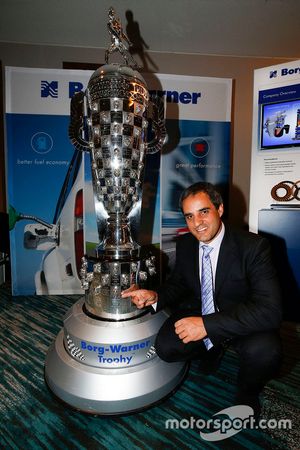IndyCar aero kits were “very worthwhile” says Chevrolet boss
Mark Kent, Chevy’s director of motorsports, says he’s satisfied the brand has achieved its aims since the introduction of aero kits for the start of the 2015 IndyCar season.

Rainier Ehrhardt








Kent also insisted that Chevrolet derives marketing and technological benefits from its involvement with the Verizon IndyCar Series.
He told Motorsport.com: “We got everything out of aero kits that we hoped to, so from our perspective, they were a very worthwhile proposition.
“There were two reasons we did it: 1) visual differentiation and 2) the opportunity to out-engineer and outperform our competition. And if you look back at last year, the [Chevrolet and Honda] cars looked truly different from each other, and we definitely had a package that did outperform our competition.”
Rival designs to converge
Kent admitted that he expected the Chevrolet and Honda designs to converge – although he did not wish to directly address IndyCar’s controversial Rule 9.3 that allowed HPD more areas of development to catch up with the superior Chevrolet kit during this last off-season.
“Moving forward, the cars are going to look a bit closer in terms of design and therefore likely to perform closer,” said Kent, “so is there as much benefit as before? No. But there is still an opportunity to beat our competition and we hope that we can maintain that performance advantage.
“It’s up to the individual manufacturer to choose when to introduce the new parts in the three boxes allowed under Rule 9.2. You’ve seen at St. Petersburg our new bumper pod, and we’ll introduce more modifications through the year.”
More than just marketing
Since Chevrolet returned to IndyCar competition under the current 2.2-liter turbocharged engine rules in 2012, the Ilmor-built units have had the edge over rival HPD in terms of results. But it took until the fourth year of the program, last season, for the Bowtie brand to nail its IndyCar “holy trinity” of titles. Kent said that had been a major breakthrough.
“We definitely get marketing value from what we do here on track,” he remarked. “To be able to tell people that we were the first manufacturer in recent history to power the champion driver, the Indy 500 winner and claim the manufacturers’ crown all in the same year was huge. So through various channels we communicated that to the general public.”
However, Kent insisted that it wasn't just a marketing exercise. He said there was both technical and human transfer between the IndyCar program and production road cars, despite there being a less obvious connection than between, for example, the Corvette C7.Rs that race in IMSA’s GTLM class and the Corvette road cars.
“Yeah, we get a lot of benefit from talking about the technologies in the IndyCar race engine and how they transfer to street cars,” he stated. “Small-displacement engines, turbocharging, direct injection, E85 fuel – the knowledge we gain from the extremes of racing does connect the track to the showroom.”
IndyCar manager to be appointed soon
Chevrolet has not yet replaced Chris Berube, its IndyCar program manager 2012-’15 who is now based at GM’s Milford Proving Grounds in Michigan as an engineering group manager.
However, Kent said a new IndyCar manager would be appointed soon.
He explained: “We’re taking our time to find a replacement because it’s more important to find the right person than rushing it. We’re trying to fill the position from inside the company and will hopefully have someone in place within the next month or so.
“It’s a rotational assignment where we’re trying to bring in up-and-coming engineers, hone their program management skills in racing and then send them back into production to create great street cars.”
Be part of Motorsport community
Join the conversationShare Or Save This Story
Subscribe and access Motorsport.com with your ad-blocker.
From Formula 1 to MotoGP we report straight from the paddock because we love our sport, just like you. In order to keep delivering our expert journalism, our website uses advertising. Still, we want to give you the opportunity to enjoy an ad-free and tracker-free website and to continue using your adblocker.



















Top Comments